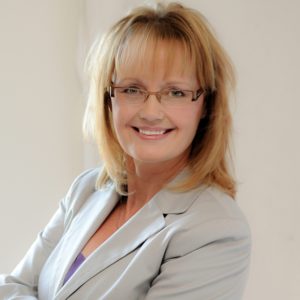How to Choose the Right Technology Partner for Your Senior Care Facility

Josh Studzinski, vice president of go to market strategy and operations, Caremerge
When operating a senior care facility, choosing the right technology partner can be integral to your business’ success, security, and overall operations. A talented technology partner who’s the right fit for your facility can help you make the most of your tech systems, design them so they truly work for your residents and staff, and help you avoid potential problems before they occur.
But choosing the right technology partner isn’t always simple. That’s why Josh Studzinski, vice president of go to market strategy and operations at Caremerge, has highlighted some of the essential information you should know – including the questions you should be prepared to ask – when finding a new tech partner.
IASC: What are some of the most common technology challenges that senior care facilities face?
Studzinski: Communities struggle to provide the best infrastructure for new technology to work. Within communities, Wi-Fi and bandwidth limitations pose a major foundational obstacle when adopting technology. As more technology tools are added, like iPads or Alexa Voice devices, more bandwidth is consumed. Without the proper network optimization and infrastructure, the technology doesn’t operate as effectively.
Staff and change management is another big hurdle for communities. While some communities may decide to stick with legacy technology, others might be looking to transition to new technology. Providing the right training and guidance for staff and residents to lead that transition has been tough for communities.
For communities that have multiple legacy technology systems in place, it’s been challenging to try and consolidate those. Legacy technologies don’t interact and talk to each other, which leads to siloed information and data that can’t be used for the greater good of the community.
Lastly, it’s difficult for communities to make sure each person is utilizing and embracing the technology because we all consume content and use technology differently. We’ve found that the most successful communities are those who offer ongoing technology education for their residents. Some communities have resident-led training from members of the resident tech advisory council.
IASC: What role does a technology partner play in helping facilities to overcome those challenges?
Studzinski: It’s our job to not only provide the right technology but the most efficient experience possible for older adults, staff, and family members. As obvious as it may sound, the product itself needs help communities optimize their bandwidth usage. Everything from the code to the apps should be on par with the latest technology.
IASC: Technology partners can take on many models and roles, from coming in as an IT consultant to fully managing all of a facility’s technology. When considering these different potential models, which options have you found are most popular in senior care facilities? Which models do you most recommend?
Studzinski: Each community has different factors that contribute to creating a fulfilling life within that community. Determining the right role for technology partners to play in management is based on the specific needs, goals, and budget of the facility. There isn’t a one-size-fits-all management model.
For example, if you are a smaller community of 50 older adults, you might not need someone managing your entire technology stack. But if you’re a Life Plan Community with hundreds of residents, then it makes sense to have a partner to support those initiatives.
In addition to the current needs of the community, there are various integrations to support the evolving needs of staff and residents. As resident and staff needs change, communities will look to grow their technology offerings. The right technology partner can help manage, grow, and monitor those investments.
IASC: When starting the process of looking for a technology partner, what are some of the preparation steps that a facility should take?
Studzinski: Before you start looking for a technology partner, understand what you’re looking for.
Take a look at your facility and ask:
- What are our needs, goals, and budget?
- What problems are we trying to solve with technology?
- What’s our timeline?
- Do we have the infrastructure in place to support technology initiatives?
Once you’ve answered these questions, start documenting the process. Go department by department to determine their individual needs. By having all of the preliminary questions answered and documented upfront, you’ll have a more productive conversation when it finally comes time to meet with the potential partner.
Take your time vetting a technology partner. The biggest mistake you can make with technology is hastily buying pieces that don’t interact with each other. When technologies are compatible on a platform, they interact seamlessly making for a smooth transition. Product compatibility is also useful when evaluating how the technology is performing. The collected data points can give a holistic view of how it’s performing across the community.
IASC: What staff should be involved in the process and what types of background planning and research should a facility do?
Studzinski: The right involvement depends on what problems the technology is intended to solve. For example, let’s say you’re looking for a community engagement platform. You’ll want to invite residents to a demo of the product. Many communities now have a dedicated resident tech advisory council to help with technology rollouts.
We’ve seen great results from communities that encourage both the staff and residents to get involved in the process. You’ll need their buy-in before you commit to a platform, and having their support will make the change that much easier.
IASC: Are there certain qualities that a facility should look for in a great technology partner?
Studzinski: Beyond the standard vendor assessment questions, a good technology partner should grow with your community and support changing needs. Think down the road one to five years, and consider if that platform will be around to support the needs of future residents.
Additionally, the right partner will provide excellent customer support. Understanding who the best contact would be for questions and what type of response time you should expect is important especially if you’re implementing new technology.
IASC: Are there any great questions or requirements that you recommend a facility bring up during initial discussions and interviews with a potential technology partner?
Studzinski: A major consideration to make when scouting technology partners is that there’s always going to be new, innovative companies out there. You’ll want to look for a partner with a track record of success.
Take a look at the technology vendor and ask:
- How long have they been in business?
- How many communities and residents do they serve?
- What is their technology most used for?
- Do they have references?
Asking the right questions depends on how deep you’ll be diving into the technology provider space. There are plenty of questions you could ask, but it depends what your goals are for the technology. If you plan to use technology to help staff save time in their days, you might ask if they have applications that support staff processes, and what kind of results they’ve seen in communities.
Ultimately, finding the right technology partner boils down to figuring out the ‘why’ behind the company. You’ll want your mission to align with the mission of your technology partner. Our mission, for example, is to ensure the aging experience is full of peace of mind and joy.
IASC: Is there anything else you would like to share about finding the right technology partner?
Studzinski: Make sure you do your research, ask questions, and ask for references. If something seems off, or you’re uncertain, ask before making a decision. Ask all your questions upfront, and make sure you see a demo and invite the residents and staff to test it out. That’s the most effective way to get support and sign off from the community.
Remember, the technology partner has been through this process multiple times, but you might not have. As the incoming community, you should have your documented needs and goals prepared, but it’s up to the technology partner to help guide the buying process.

Paige Cerulli is a contributing writer to i Advance Senior Care.
Related Articles
Topics: Featured Articles , General Technology , Information Technology , Resident Care , Technology & IT , Training











